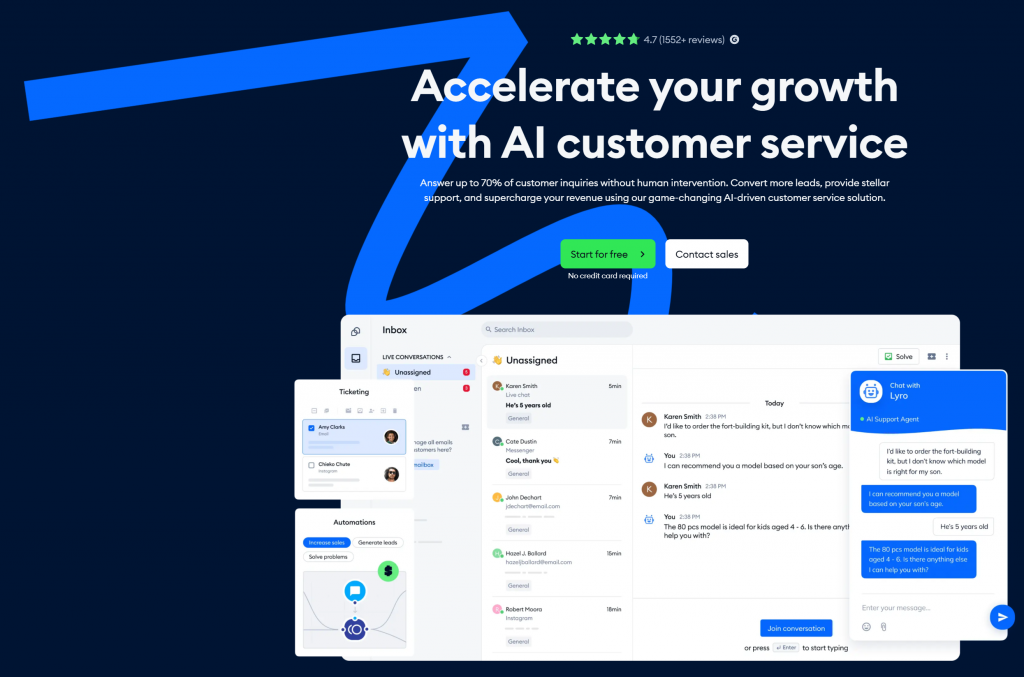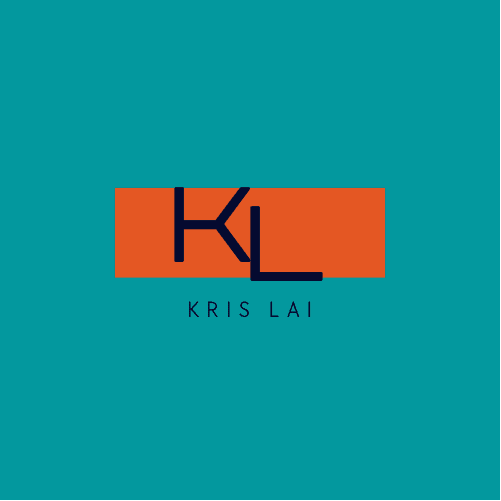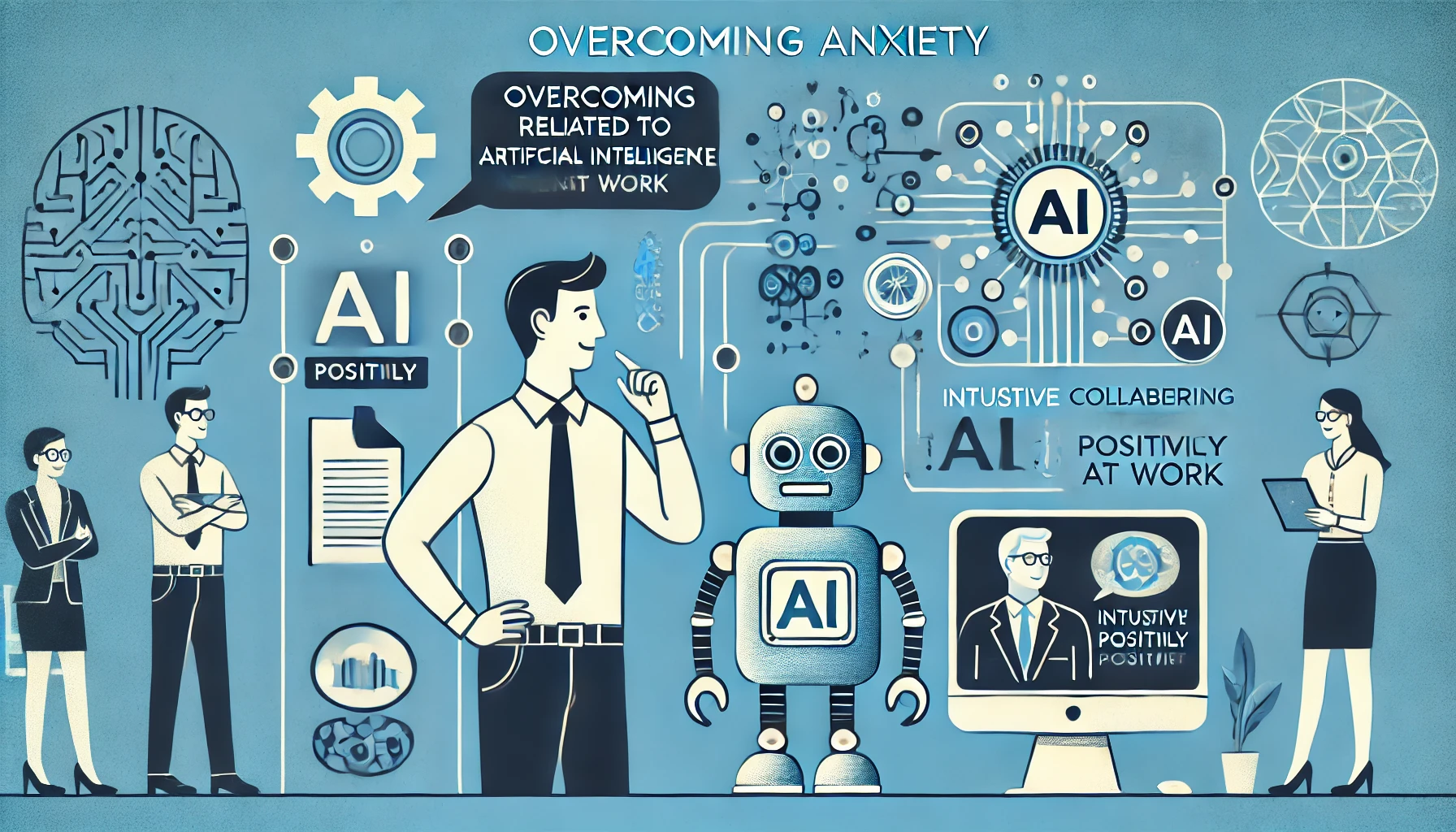I’ll be honest, when artificial intelligence first popped up in mainstream news, I felt a bit uneasy. Suddenly, everyone was talking about robots taking over jobs and machines becoming smarter than humans—talk about anxiety at work! Even my usually optimistic friends started sharing those gloomy “AI will replace us all” posts online, which didn’t exactly calm my nerves. It got me thinking: am I just overreacting, or is this “AI anxiety” a real thing that leaders need to worry about?
Disclosure: If you click on my affiliate/advertiser’s links, I am going to receive a tiny commission. AND… Most of the time, you will receive an offer of some kind. It’ s a Win/Win!
Then, when I first heard the term “AI anxiety,” or as some cleverly call it, “AI-nxiety,” I chuckled at the cleverness—but quickly realised it wasn’t just a buzzword. Like many of you, I’ve had sleepless nights thinking about how artificial intelligence might impact my job and those of my colleagues. After all, facing change can be as scary as staring into the unknown—like stepping onto thin ice, or as we Finns say, “kävellä heikoilla jäillä.”
Whether you call it “AI Anxiety,” “AI-nxiety,” or simply a worry about what artificial intelligence means for our jobs, this fear has genuinely started to affect how people feel at work. The uncertainty around AI can lead to real anxiety attack symptoms—sleepless nights, stress headaches, and even heart palpitations (did you know stress and anxiety can cause heart problems?). And let’s face it, feeling constant anxiety about work performance because of technology isn’t exactly going to boost productivity or morale.
Let’s face it: AI isn’t going anywhere! Instead of fearing it, I began asking myself, how can we turn our AI anxiety into a real advantage? I firmly believe that addressing our fears and anxieties head-on can help us transform uncertainty into opportunity. After all, as the saying goes, “Bättre att stämma i bäcken än i ån,”—which in Swedish roughly translates to, “Better to address problems early before they become big.”
I’ve seen firsthand how AI anxiety manifests in teams—people becoming withdrawn, productivity dipping, or a noticeable tension during meetings when “automation” or “machine learning” is mentioned. Understanding these symptoms and their impact is crucial because unchecked anxiety doesn’t just affect performance—it can strain the heart, physically and emotionally. And yes, stress and anxiety can indeed cause heart problems; it’s not just a figure of speech!

But here’s the good news—“kaikkeen tottuu paitsi jääpuikkoon selässä”—that’s a Finnish saying my grandad loved, and it means, “You can get used to anything except an icicle in your back!” In other words, change may feel uncomfortable at first, but humans are incredibly adaptable. Rather than feeling overwhelmed by anxiety about artificial intelligence, we can take charge and transform it into our competitive edge. I’ve learned first-hand how important it is to turn fear into fuel and anxiety into actionable strategies. It’s entirely possible, and in fact necessary, for us leaders to help our teams embrace and thrive in this new era.
This is precisely why I want this article to be practical and helpful, packed with strategies that I’ve seen work in real-life scenarios. From my experience, open dialogue and transparency go a long way toward easing anxiety about artificial intelligence. I’ve also found that continuous learning and clearly communicated upskilling programmes not only reduce fear but also turn apprehension into enthusiasm. Who wouldn’t want that?
I mean, who isn’t at least a little anxious at work these days?! Let’s do a simple poll to find out! 😊
📈 Anxiety Snapshot
Total Responses: 0
Throughout my journey—both as a business leader and someone personally impacted by AI-driven change—I’ve discovered strategies that genuinely ease the stress and help people overcome AI anxiety. And let’s face it, burying your head in the sand isn’t an option. Instead, it’s time to look openly at what exactly AI anxiety is, understand how it differs from everyday workplace stress, and then implement practical, straightforward ways to address it.
Throughout this blog post, I’ll share actionable tips, relatable examples, and success stories from companies and leaders who’ve successfully tackled employee AI anxiety. I’ll explore ways to create an environment of trust and continuous growth, discuss how to identify and support employees struggling silently, and provide practical ideas for measuring the effectiveness of your anxiety-management efforts. Because at the end of the day, understanding how anxiety affects work performance isn’t just good leadership—it’s essential for sustainable business growth.
So, if you’re feeling anxiety about work or noticing stress creeping into your team, stick with me. By the end of this article, you’ll have clear strategies on how to manage AI anxiety, create a supportive workplace, and even leverage AI to empower your team. Because change doesn’t have to be scary—it can be exciting and rewarding too! And maybe, just maybe, we might even have some fun along the way.
So, grab a cup of coffee ☕ (the Finns and Swedes are some of the biggest coffee drinkers in the world, according to BBC News) — or perhaps tea 🍵 if that’s more your style (my UK neighbours 😉)— settle in, and let’s turn your team’s AI anxiety into your greatest advantage. After all, as the Swedish proverb wisely says, “Den som är rädd för att bli blöt, blir aldrig ren.” (“He who fears getting wet will never become clean.”) Let’s dive in fearlessly together!
📚 Table of Contents
- 1. Understanding AI Anxiety: What Is It and Why Does It Matter?
- 2. Recognizing the Signs: AI Anxiety Symptoms in Your Team
- 3. The Impact of AI on the Workforce: Addressing Legitimate Concerns
- 4. Is it a Panic? Differentiating AI Anxiety from General Work Stress
- 5. How to Manage AI Anxiety: Practical Strategies for Leaders
- 6. Upskilling for the AI Era: Building a Future-Proof Workforce
- 7. Creating a Culture of Continuous Learning: Reducing Fear of AI
- 8. Communication and Transparency: Easing AI Anxiety Through Open Dialogue
- 9. Addressing Individual Needs: Supporting Employees with Varying Levels of AI Anxiety
- 10. Measuring Success: Tracking the Effectiveness of Your AI Anxiety Management Strategies
- Turning AI Anxiety into Your Competitive Advantage: It’s Your Move!
Understanding AI Anxiety: What Is It and Why Does It Matter?
When I first heard the phrase “AI-nxiety,” I admit—I chuckled. It sounded a bit made-up, didn’t it? Like something out of a sci-fi movie or maybe the title of an abstract painting—perhaps something like “Anxiety” by Edvard Munch, only with robots and algorithms thrown in for good measure! But laughter aside, I quickly realised AI anxiety is no joke. In fact, it’s quietly becoming a real issue in workplaces everywhere.
So, what exactly is AI anxiety? Well, simply put, AI anxiety is the uneasy feeling, worry, or even outright dread some people experience when thinking about artificial intelligence entering their jobs and changing how they work. It’s that gnawing feeling you get when you hear about automation, robots, or smart algorithms potentially taking over tasks you’ve been doing for years. And unlike everyday stress—say, the kind you get from missing deadlines or a cranky boss—AI anxiety often lingers beneath the surface, quietly impacting team morale and performance.

I quickly discovered that what makes AI anxiety especially tricky is how it differs from ordinary fear. Fear is a clear emotional response to an immediate, tangible threat—like realising you’ve forgotten an important client meeting or seeing a spider on your desk. Anxiety, however, is subtler; it’s vague and uncertain, a nagging worry about something that might happen in the future. As the old Finnish proverb goes, “Pelko suurentaa silmät” (“Fear makes the eyes bigger”), meaning our imagination can often exaggerate potential threats, making them feel worse than reality. That’s precisely how AI anxiety sneaks up on us, quietly magnifying our fears about what AI might do to our careers.
Why should leaders—or any of us, for that matter—care about AI anxiety? Well, because it’s silently harmful to workplace morale and productivity. Imagine how your team feels if they constantly worry about being replaced by machines. Anxiety at work can lead to poorer performance, lower creativity, and even health issues. Yes, stress and anxiety really can cause heart problems, not to mention sleepless nights, concentration issues, or a drop in team spirit. Believe me, if left unchecked, AI anxiety can quickly turn into a significant business risk.
📌 Survey Insights: AI Anxiety in the Workplace (APA)
- Job Security: Nearly 4 in 10 workers (38%) worry AI will make their jobs obsolete.
- Workplace Monitoring: Around 51% are aware their employers use tech to monitor their activities, raising stress levels.
- Mental Health Impact: AI-related worries are clearly linked to higher workplace stress and burnout symptoms.
Let me share an example from my own experience. A friend of mine runs a small company in Sweden. When he first introduced automation to simplify routine tasks, he thought everyone would cheer. But instead, he noticed morale dropping sharply. Employees suddenly became tense and less cooperative, showing clear symptoms of anxiety at work—headaches, fatigue, and mood swings. Only after speaking openly with them did he realise they weren’t opposed to automation itself; they were just anxious about losing their jobs or becoming irrelevant. Thankfully, once the root cause was understood and openly discussed, people felt heard, and morale quickly bounced back.
Understanding AI anxiety matters deeply because it’s the first step towards managing it. It’s essential for us as leaders, colleagues, and even just human beings to acknowledge this new challenge openly. Once we do, we can address it head-on—turning uncertainty and anxiety into confidence and opportunity. After all, isn’t that precisely what good leadership—and perhaps even life itself—is all about?
Recognizing the Signs: AI Anxiety Symptoms in Your Team
Have you ever noticed someone on your team acting unusually quiet, withdrawn, or irritable when the topic of automation or AI pops up? If so, you’re definitely not alone. I’ve spotted these symptoms in teams I’ve managed, and at first, it wasn’t always clear what was happening. Was it just normal workplace stress or something more significant—like genuine AI anxiety? As the old Swedish saying goes, “Den som är rädd ser spöken överallt” (“The one who’s scared sees ghosts everywhere”). Anxiety can indeed make even small changes feel like big threats, turning everyday work-life into a constant struggle.
So, what are the clear signs of AI anxiety in your employees? Well, anxiety at work can show itself in several ways. You might notice physical symptoms like frequent headaches, tiredness, or even stomach problems. Anxiety doesn’t just live in the mind; it manifests physically too! I’ve had colleagues complain of poor sleep or persistent tiredness after news about AI changes in the company. These seemingly small issues, if consistent, might signal deeper anxiety lurking beneath the surface.
Emotionally, the indicators are often subtle but telling. A previously confident team member might start questioning their abilities, showing hesitation, or becoming overly cautious about decisions. They might suddenly worry more openly about job security, or constantly ask questions like, “Will AI make my skills obsolete?” or “Am I still valuable here?” Remember, anxiety about artificial intelligence often comes from uncertainty—employees wonder if they’ll fit into a future shaped by machines.
Behavioural changes can be another clear red flag. Have you seen a team member suddenly withdraw from social interactions or avoid conversations about AI-related tasks? This might indicate a silent anxiety attack—quietly internalised stress that doesn’t explode dramatically but instead slowly drains morale and productivity. Unlike obvious anxiety attack symptoms such as rapid breathing or panic attacks, silent anxiety can quietly chip away at an employee’s confidence and motivation. It’s like the Finnish proverb, “Hiljainen vesi on syvä” (“Still waters run deep”)—quiet anxiety can often run deeper than visible stress, making it harder to detect.
💡 How to Recognise Anxiety at Work (and What to Do)
Spotting anxiety early helps you support yourself or your team better.
Common signs include:- Increased irritability or mood swings
- Difficulty concentrating or making decisions
- Physical symptoms like headaches or tiredness
- Withdrawn behaviour or avoiding conversations
- Constant worry or fear about job security or changes
- Start a conversation: Talk gently and openly about your or your team’s feelings.
- Encourage breaks: Short breaks or fresh air can ease tension.
- Provide reassurance: Clearly communicate future plans to reduce uncertainty.
- Seek support: Professional help or workplace resources can offer extra guidance.
Remember, acknowledging anxiety is the first step towards feeling better.
I recall a colleague in Sweden who seemed perfectly fine at first glance, but when we introduced AI-driven customer service software, he suddenly started taking more sick leave. After a friendly chat, he revealed his anxiety about being replaced by the software and felt overwhelmed but embarrassed to speak up. Thankfully, once we acknowledged his fears openly, provided clear reassurance, and offered tailored support, his confidence gradually returned.
The good news is, once you learn to spot these signs of anxiety early, you can offer timely support to your team. Simply paying attention, asking empathetic questions, and recognising that AI anxiety exists can make a huge difference. When your employees feel seen, understood, and supported, you’re already halfway there in easing their anxiety and restoring a sense of control.
After all, isn’t that exactly how we want to feel at work—valued, understood, and prepared to handle whatever comes our way, even if it’s robots and algorithms?
The Impact of AI on the Workforce: Addressing Legitimate Concerns
Let’s be honest—AI isn’t just a “fashion thing”. It’s genuinely reshaping jobs, workplaces, and entire industries. Initially, even I felt a bit uneasy whenever I read another headline about how AI would replace millions of jobs worldwide. And if I felt that anxiety about artificial intelligence creeping up, imagine how employees on the front lines might feel! These worries aren’t entirely unfounded either; AI is undoubtedly changing how we work and what skills we’ll need to stay relevant.
Enroll in the AI Product Manager Nanodegree Program for a comprehensive overview of AI and machine learning for business. You'll learn to build and train AI models, evaluate results, and measure success. Click HERE to get started NOW.
Now, here’s something crucial I’ve learned from experience: AI anxiety is more than just “fear of the unknown.” There are legitimate reasons behind it. For instance, some workers genuinely worry their roles might vanish overnight. And truthfully, some jobs will indeed be automated or transformed dramatically by AI. Tasks like repetitive data entry, basic customer queries, and routine administrative duties are increasingly being handled by AI tools. No wonder people feel nervous about their futures!
But there’s another side to this coin. While AI takes away certain tasks, it also creates entirely new roles and opportunities. Rather than replacing humans outright, AI often changes our jobs, demanding new skill sets or ways of thinking. It’s not all doom and gloom—far from it! As the Swedes often say, “Inget ont som inte har något gott med sig” (“There’s nothing bad without something good” or “Every cloud has a silver lining“). In other words, every challenge presents opportunities too, if we’re open to seeing them.
Let me share an inspiring example. A friend in Helsinki worked at a call centre where AI chatbots were introduced. At first, there was widespread panic. Would this chatbot replace everyone? Instead, something remarkable happened: the bots handled the routine queries, freeing up the human agents to deal with more complex, meaningful interactions. Eventually, these employees became specialised problem-solvers and customer-relationship experts. Job satisfaction increased significantly because the human workers could focus on more rewarding tasks, which also improved the company’s reputation for excellent customer service.

This kind of transformation happens more often than you might think. Yes, AI changes jobs—but often for the better, provided we embrace the shift proactively. Leaders who clearly communicate these potential opportunities can help employees see AI not as an adversary but as an ally. Employees often feel anxious not because AI itself is frightening, but because nobody clearly explains how their roles might evolve. Clarity removes uncertainty, and uncertainty is anxiety’s favourite playground!
Addressing genuine AI anxiety begins with understanding and acknowledging that these concerns are valid. It means having honest conversations about the real impact of AI on the workforce and taking concrete steps to reassure and reskill your team. Once you turn uncertainty into clarity, your employees will realise that AI doesn’t have to threaten their careers—it could actually enhance them!
Is it a Panic? Differentiating AI Anxiety from General Work Stress
If you’ve ever worked in a busy office (and who hasn’t?), you’ve probably seen stress appear in countless forms—looming deadlines, tough meetings, overflowing inboxes. Stress is a normal part of work life, right? But lately, as AI becomes an everyday topic, I’ve noticed another, subtler form of worry creeping into workplaces: this AI anxiety. Initially, I wondered, “Is this just the usual work stress wearing a different disguise, or is it something genuinely different?”
It’s easy to confuse everyday stress with anxiety, but there’s an important difference. Stress usually has a clear cause—you know exactly why you’re tense. Maybe you have too much work, an unhappy customer, or you forgot your colleague’s birthday again! Anxiety, though, is sneakier. It’s that vague, uneasy feeling about something uncertain in the future. You don’t always know exactly why you feel anxious; you just feel worried. It’s similar to the Swedish expression: “Att oroa sig är att betala ränta på ett lån man aldrig tagit,” meaning, “Worrying is like paying interest on a loan you’ve never taken.” Anxiety about artificial intelligence is exactly that—you’re feeling worried about something uncertain, something that hasn’t yet happened, and maybe never will!
Let me illustrate this clearly: Imagine your team gets told, “We’re introducing new AI software next month.” General workplace stress might involve employees immediately worrying about learning the new system—this stress has a clear cause and is relatively short-lived. AI anxiety, however, happens when employees quietly start to worry about long-term implications: “Will my role disappear eventually?”, “Will my skills still matter?”, or “Will I still be relevant here in two years?” This anxiety can linger and quietly drain morale and productivity if not addressed.
Another critical difference is how stress and anxiety show themselves physically. Stress usually produces clear, immediate physical symptoms—tight shoulders, headaches, or feeling overwhelmed. Anxiety, however, often feels vague, causing symptoms like unease, trouble sleeping, or constant worry about job security. Sometimes anxiety even triggers a panic attack, where someone feels suddenly overwhelmed—fast heartbeat, sweaty palms, dizziness—but doesn’t always know why. Recognising the difference between anxiety and panic attacks is vital. As I learned first-hand, an anxiety attack is subtler but equally disruptive to productivity and wellbeing.
I recall one employee from a previous workplace who seemed to manage regular stress perfectly. But when the company announced plans involving AI-driven systems, she quietly became withdrawn. At first, I thought she was just busy, but eventually, she shared that she’d had silent anxiety attacks—feeling overwhelmed and tense without an obvious reason. Understanding her symptoms made all the difference. After openly discussing her anxiety about AI, providing clear reassurance, and outlining specific support, she regained her confidence and returned to her usual self.
So, recognising the difference between AI anxiety and everyday stress matters greatly. As leaders, colleagues, or simply supportive team members, knowing this difference means we can offer the right kind of help at the right time—transforming anxiety into empowerment rather than leaving employees silently struggling. After all, isn’t supporting each other precisely what makes us human—even in a workplace increasingly shaped by AI?
⚠️ How to Recognise a Panic Attack (and Calm Down)
A panic attack can feel scary but knowing the signs can help you stay calm:
Common symptoms include:- Rapid heartbeat or palpitations
- Sweating or chills
- Shortness of breath or feeling unable to breathe
- Dizziness or feeling faint
- Tingling in hands or feet
- A sudden feeling of fear or doom
- Breathe deeply: Slowly breathe in through your nose, and gently breathe out through your mouth.
- Ground yourself: Name five things you can see, four you can touch, three you can hear, two you can smell, and one you can taste.
- Reassure yourself: Remember, panic attacks pass quickly and aren’t dangerous, even though they feel intense.
- Seek support: Talk to someone you trust or take a quiet moment to recover.
Note: If panic attacks happen frequently, it’s important to seek professional help.
How to Manage AI Anxiety: Practical Strategies for Leaders
So, you’ve recognised AI anxiety creeping into your team. Great! Recognising it is half the battle, but what’s next? As a leader myself, I’ve found that managing anxiety at work—particularly something as nuanced as AI anxiety—requires more than just good intentions. It needs clear strategies, openness, and above all, empathy. But don’t worry; you don’t have to be a psychologist to make a positive impact!
First, communication is key—transparent, honest, and frequent communication. I’ve learned the hard way that silence fuels anxiety. When people don’t know what’s happening, their imaginations run wild. My best advice? Don’t let anxiety create the narrative. Instead, hold regular meetings, openly discuss upcoming AI-related changes, and clearly communicate your intentions. Let your team ask questions—no matter how simple or complicated—and genuinely listen to their worries. It’s a simple but powerful way to reduce anxiety about artificial intelligence.
Empathy goes hand-in-hand with clear communication. Understanding your team’s fears without judgment is crucial. Acknowledge that AI anxiety is natural—after all, we’re human, not robots! Offer genuine reassurance by recognising these feelings as valid and then guide your employees gently toward solutions. Empathy transforms fear into trust, and trust is your strongest ally against anxiety.
Another effective approach is to encourage an open and supportive workplace culture. Make it safe for your employees to voice concerns or worries without fear of embarrassment or ridicule. Remember, anxiety thrives in silence, and the more openly your team discusses their anxieties, the weaker those anxieties become. Or as we Finns might say, “Jaettu ilo on kaksinkertainen ilo, jaettu suru on puolikas suru,” meaning “Shared joy is double joy; shared sorrow is half a sorrow.” Sharing anxiety diminishes its power, too.
Providing tangible support—like training, resources, or even dedicated workshops—is another fantastic strategy. When people know you’re investing in their future, anxiety fades into the background. I recall a colleague in Stockholm who significantly reduced anxiety at work by setting up regular training sessions about AI and automation. Initially, the staff felt uncertain, but soon enough, those sessions turned into opportunities rather than threats. Employees realised they could actively shape their future rather than passively fearing it.
Lastly, celebrate small successes openly. Show your team that adaptation isn’t just possible—it’s already happening! Celebrating even small achievements boosts morale and clearly demonstrates that progress is being made. It reminds your team they’re already successfully adapting to the AI-driven future, and nothing calms anxiety quite like evidence that you can manage change effectively.
By actively employing these strategies, you’ll find that AI anxiety isn’t something to fear—it’s something you can confidently manage. Even better, you might just find your team thriving, excited, and ready for whatever future AI might bring. 😊
🛠️ Quick Strategies to Manage AI Anxiety
- Communicate clearly and regularly: Keep everyone informed about upcoming changes.
- Practise empathy: Acknowledge employees’ fears without judgment.
- Create a safe space: Encourage open dialogue about AI concerns.
- Offer practical support: Provide training, workshops, or resources to build confidence.
- Celebrate progress: Highlight and celebrate every small victory your team achieves.
Remember, the goal isn’t to eliminate anxiety completely—it’s about managing it positively and proactively!
Upskilling for the AI Era: Building a Future-Proof Workforce
I’ll share a little secret I’ve learned from navigating the tricky waters of AI-driven change: one of the best ways to get over AI anxiety is simply to learn your way through it. Yes, really! Continuous learning, or upskilling, isn’t just corporate jargon—it’s one of the most powerful tools to manage anxiety at work and ensure your workforce thrives, even as AI transforms the landscape.
Think of AI as a moving train: standing still might feel comfortable at first, but eventually, you’ll feel left behind. On the other hand, actively jumping aboard—by upgrading skills and embracing new knowledge—keeps you safely moving forward. I’ve found from personal experience that when teams know they’re learning and growing, their anxiety about artificial intelligence naturally fades. Instead, excitement, curiosity, and confidence take its place.
This isn’t just theory; it’s backed by real-life experiences I’ve observed and shared previously on my blog krislai.com. In my earlier articles—such as From Idea to Market: A Step-by-Step Guide for Entrepreneurs and Disruptive Technologies and Their Impact on Business Models—I discussed how organisations that embrace innovation and continuous learning navigate disruptive changes with less stress and more confidence. Employees who actively develop their skills rarely fear AI; instead, they see opportunities for personal growth and career advancement.

So, how can you practically implement upskilling to help your workforce become AI-ready? One proven approach is to offer targeted training programs—workshops or online courses—that directly relate to the AI changes your organisation faces. For example, if your company is introducing automation software, offering training in related skills like data analytics, digital literacy, or creative problem-solving can reassure employees they won’t become obsolete. When people know they’re gaining valuable, future-proof skills, AI stops being scary and instead becomes exciting.
Another effective method is to encourage a culture of “micro-learning”—short bursts of learning integrated into daily work life. It could be a quick online video, a webinar, or even lunchtime learning sessions. Micro-learning doesn’t overwhelm people and helps everyone continually refresh their skills. Remember, learning is a bit like fitness—little and often usually works better than occasional, intense bursts!
📌 Survey Insights: Rising AI Anxiety Among Employees (EY)
- Prevalence of Anxiety: 71% of employees express concerns about AI integration, with anxiety increasing for 48% compared to last year.
- Fear of Job Loss: About 75% fear AI could make certain jobs obsolete, and 65% specifically worry about their own roles.
- Need for Training: 73% worry about inadequate AI training opportunities, and 63% are anxious due to limited access to learning resources.
I remember a colleague in Finland whose team initially struggled with anxiety when the company introduced AI-driven data management tools. Instead of ignoring their anxiety, she set up regular micro-learning sessions. Team members gradually realised they were fully capable of adapting, and they even became enthusiastic advocates for these new tools. Their AI anxiety vanished—not by magic, but through steady and supportive skill-building.
Finally, make sure your team sees that AI isn’t about replacing people—it’s about augmenting what we already do best. By continuously updating your skills, you and your team won’t just survive the AI revolution—you’ll thrive. After all, as the Swedish proverb wisely says, “Kunskap är aldrig tung att bära” (“Knowledge is never heavy to carry”).
Creating a Culture of Continuous Learning: Reducing Fear of AI
If there’s one thing I’ve learned from my years of navigating business change, it’s this: creating a culture of continuous learning isn’t just good leadership—it’s also one of the best antidotes to AI anxiety. When learning becomes a natural part of your workplace culture, AI ceases to be a threat and instead becomes a partner in progress.
I understand firsthand how challenging it can feel to introduce something new—whether it’s AI technology or simply a fresh way of doing things. Initially, employees may hesitate, worrying they can’t keep up or fearing their existing skills won’t be relevant. That’s normal! But here’s the secret: once continuous learning becomes embedded into your team’s culture, change feels far less intimidating. Your team stops worrying about artificial intelligence and starts viewing AI as an exciting opportunity for growth.
I’ve explored this extensively before, especially in my previous article “Innovation and Entrepreneurship: Fostering a Culture of Innovation in Your Organization”. In that post, I highlighted how companies with a strong culture of innovation tend to navigate changes—like AI adoption—more confidently. Continuous learning and innovation go hand-in-hand; both help your team adapt quickly and enthusiastically, rather than fearfully.
So, how exactly do you create this culture of continuous learning in your own workplace? Firstly, lead by example. When your employees see that even you—as their leader—regularly seek out new knowledge, they’ll naturally follow suit. Share openly about training courses you’ve attended, books you’re reading, or new skills you’re developing. Your willingness to learn sends a powerful message that continuous learning is encouraged, celebrated, and valued.
Another practical step is providing easy access to resources and opportunities for growth. Whether it’s online learning subscriptions, regular skill-sharing sessions, or even informal “lunch-and-learns,” creating opportunities signals that learning is part of your workplace DNA. You could even reward or recognise those who actively seek new skills. Remember the Finnish saying: “Oppia ikä kaikki,” meaning “You’re never too old to learn.” Emphasising lifelong learning helps everyone feel comfortable embracing new skills and technologies.
Here’s an inspiring example from a company I recently encountered in Sweden. They faced widespread anxiety when introducing AI-driven marketing tools. But instead of forcing adoption, they first built a culture where curiosity and continuous learning were encouraged daily. Employees were provided with short, engaging training sessions, encouraged to ask questions openly, and celebrated for small learning achievements. Within months, not only had AI anxiety dramatically decreased, but their team members felt genuinely excited about their new capabilities.
Lastly, be patient. Cultures don’t shift overnight, but consistent, positive reinforcement eventually makes continuous learning feel natural. Soon, AI won’t be something to fear; it’ll be just another exciting part of your team’s growth journey. And as leaders, there’s no better feeling than seeing your team confidently step forward, ready and excited about whatever comes next—even when that “next” involves robots!
Communication and Transparency: Easing AI Anxiety Through Open Dialogue
If there’s one lesson I’ve learned repeatedly during my career, it’s this: nothing feeds anxiety at work like uncertainty. Especially when the topic involves something as new and potentially disruptive as artificial intelligence, silence or ambiguity can lead your team to imagine the worst. Clear, transparent communication isn’t just a leadership best practice—it’s an essential tool for easing AI anxiety and building lasting trust.
Let’s face it, when news about AI reaches your workplace, employees will have questions—lots of them. I remember introducing new AI-driven analytics tools to my team and thinking everyone would immediately recognise the benefits. Instead, I encountered hesitant nods and cautious questions like, “What exactly will this mean for my job?” It was then I realised: clear communication wasn’t just beneficial; it was absolutely essential.
Transparency is key, especially when talking about changes driven by AI. Be honest about what you know—and even what you don’t yet know. People respect authenticity, and they appreciate knowing where things stand, even if the picture isn’t fully clear yet. It’s perfectly okay to say, “I don’t have all the answers yet, but we’ll figure it out together.” Trust me; employees value honesty far more than reassuring half-truths.
A Swedish proverb captures this perfectly: “Rak kommunikation öppnar alla dörrar,” meaning “Straightforward communication opens all doors.” Open dialogue means allowing employees to share their fears, worries, or doubts about AI without judgment. Create safe spaces—regular team meetings, Q&A sessions, or even informal coffee catch-ups—where employees can discuss AI openly and candidly. When employees feel heard, anxiety naturally eases.
I’ve written before about communication’s role in successful business transformation in my earlier post, “Innovation and Entrepreneurship: Fostering a Culture of Innovation in Your Organization”. In that article, I emphasised that a culture of open communication empowers employees to embrace change positively rather than fear it. The same is true for AI-driven transformations—clear, regular communication not only eases anxiety but also builds genuine trust within teams.
Here’s a practical tip: use various communication channels. Not everyone expresses anxiety in the same way. Some people prefer open team discussions; others feel safer expressing concerns privately. Try regular team meetings, one-on-one check-ins, anonymous surveys, or even informal coffee breaks to gather honest insights from your team. When people see you genuinely listening and responding to their concerns, they’ll naturally begin to trust that AI isn’t something to fear—it’s something you’re tackling together.
One Finnish friend’s company recently introduced AI-driven analytics tools. Initially, there was widespread discomfort. However, by openly addressing employee concerns in monthly forums, managers eased the anxiety significantly. Employees saw that their worries were taken seriously and began to understand clearly how these tools would support, rather than threaten, their jobs. As communication became more transparent, anxiety naturally reduced, replaced by excitement and curiosity.
So remember, communication isn’t just nice-to-have—it’s absolutely essential for managing anxiety at work. Be transparent, communicate often, and always listen carefully. When your team sees AI not as a hidden threat but as something you’re navigating openly together, anxiety quickly fades. And honestly, there’s nothing more powerful or reassuring than knowing you’re not alone when facing big changes.
Addressing Individual Needs: Supporting Employees with Varying Levels of AI Anxiety
Another thing I’ve learned through years of managing diverse teams is that anxiety—especially something as specific as AI anxiety—affects everyone differently. Just like personalities, anxiety isn’t a one-size-fits-all experience. Some colleagues handle change effortlessly, while others quietly struggle with silent anxiety attacks or even social anxiety, making it difficult to express how they truly feel. Recognising this, I’ve discovered, is crucial for effectively supporting your team.
I once had a brilliant team member who was usually outgoing and cheerful, yet she started becoming withdrawn when we introduced new AI software. At first, I thought she was simply busy, but after gently approaching her privately, she admitted her anxiety had become overwhelming, making it hard even to discuss openly. She described it like an invisible wall between her and everyone else—very much like Edvard Munch’s painting “Anxiety,” where people seem calm outwardly but are inwardly struggling. Once we tailored support specifically for her needs, offering private conversations and one-to-one coaching, she quickly bounced back with renewed confidence.

That’s the thing about anxiety—it doesn’t look or feel the same for everyone. Your outgoing colleague might openly voice concerns, while someone with social anxiety may quietly withdraw. Others might mask their anxiety entirely, appearing calm on the surface but feeling turmoil inside. Therefore, providing personalised support rather than one-size-fits-all solutions is essential.
The key is to create safe opportunities for your employees to comfortably voice their individual worries. Consider having private chats, anonymous surveys, or quiet moments to talk without pressure. Offering personalised resources and different avenues of support makes everyone feel valued and understood. And let’s be honest, isn’t feeling understood exactly what reduces anxiety in the first place?
🌱 Interested in Promoting Better Mental Health at Work?
If you’re addressing AI anxiety, you might also appreciate my detailed guide on nurturing a mentally healthy workplace:
👉 Promoting Mental Health in the Workplace: A Guide for Business Leaders
Normalising anxiety also helps immensely. Did you know countless famous individuals, from athletes to CEOs, experience anxiety too? Even successful celebrities have openly discussed their anxiety—this can help your employees see their experiences as human and manageable rather than shameful. After all, anxiety isn’t weakness; it’s simply part of being human. Reminding your team of this can significantly ease their fear about discussing their struggles openly.
It’s also helpful to offer diverse resources to match the varied needs within your team. Some might benefit from structured workshops on coping strategies, while others might prefer quieter, private resources, like uplifting readings or even comforting quotes. Sharing a reassuring passage from the Bible, such as Philippians 4:6-7—“Do not be anxious over anything, but in everything by prayer and supplication along with thanksgiving, let your petitions be made known to God; and the peace of God that surpasses all understanding will guard your hearts and your mental powers”—can offer genuine comfort for those who draw strength from spiritual sources.
🌱 Helpful Resources to Manage Anxiety at Work
Everyone deals with anxiety differently. Here are some comforting resources:
- Inspirational Quotes: “You don’t have to control your thoughts; you just have to stop letting them control you.” — Dan Millman
- Bible Verses for Comfort: Philippians 4:6-7; Matthew 11:28-30 (Find more at JW.org)
- Art & Culture: The painting “Anxiety” by Edvard Munch vividly depicts internal anxiety struggles, normalising the experience.
- Real-Life Examples: Famous celebrities such as Oprah Winfrey and Ryan Reynolds have openly discussed their anxiety, demonstrating that anxiety can affect anyone.
- Seek Professional Support: Encourage your team to speak to mental health professionals if anxiety becomes overwhelming or persistent.
Always remind your team: Experiencing anxiety doesn’t mean they’re weak—it simply means they’re human.
Ultimately, addressing anxiety about artificial intelligence is not a “one-size-fits-all” job. It’s about genuinely seeing, understanding, and supporting each person individually. When your team knows they’re seen and valued in all their diversity, their anxiety naturally decreases—and their trust in you grows stronger.
And trust me—when your team trusts you, they’re ready for anything—even AI!

Measuring Success: Tracking the Effectiveness of Your AI Anxiety Management Strategies
One of the greatest lessons I’ve learned from leading teams is this: if you can’t measure it, you can’t improve it—especially when it comes to something as subtle yet impactful as AI anxiety. You’ve acknowledged anxiety, introduced new strategies, and encouraged open dialogue—but how do you know if your efforts are actually working? Well, fortunately, there are clear, practical ways to measure your success and keep anxiety at bay.
Firstly, start by tracking employee wellbeing through regular, anonymous surveys. Ask questions that directly address anxiety at work, such as “How comfortable do you feel about recent AI changes?” or “Have recent changes increased your anxiety levels?” Regularly conducting these surveys gives you valuable data. You can quickly spot trends, improvements, or potential setbacks. Remember, honest feedback is your best friend, even if sometimes it’s uncomfortable!
Another effective tool I’ve found is using a simple anxiety test, a short questionnaire employees can take confidentially. These tests measure anxiety levels more accurately, helping you understand if anxiety is improving, worsening, or staying the same. It also helps you quickly identify who might need extra support or professional guidance.
Here’s a sample “Anxiety Test”, showing what it could look like:
Speaking of which, it’s also helpful to educate your team about what anxiety disorders actually look like. For example, what exactly is general anxiety disorder (GAD)? GAD isn’t just occasional worry—it’s a prolonged state of anxiousness, often without clear reasons, which can seriously affect daily life and work performance. Someone experiencing GAD may constantly feel tense, struggle with concentration, experience restlessness, or feel persistently worried for months at a time. Helping your team understand anxiety disorders normalises them, and most importantly, encourages seeking professional help when needed.
I’ve previously shared practical tips about recognising specific anxiety symptoms—like how a panic attack feels—in the earlier “Is it a Panic? Differentiating AI Anxiety from General Work Stress” section. Revisit those pointers regularly with your team. The more familiar everyone becomes with recognising symptoms, the more effectively they can manage their own wellbeing, and the quicker they’ll seek support if needed.
Keep an eye on your team’s overall performance metrics too. Are productivity and creativity increasing again? Is absenteeism declining? Improvements in these areas are excellent signs your strategies are genuinely working. Remember, anxiety directly impacts performance, so positive shifts in performance indicators often reflect successful anxiety management.
Finally, create a structured way to review this data—monthly or quarterly—and openly discuss it with your team. Celebrate areas of improvement and honestly address places where more work might be needed. This transparent approach not only helps fine-tune your strategy but also builds genuine trust. Your team sees you genuinely care about their wellbeing, reinforcing their confidence in facing AI-driven changes together.
If measuring success sounds like a lot of work, remember the Swedish proverb: “En resa på tusen mil börjar med ett enda steg,” meaning “A journey of a thousand miles begins with a single step.” Each small step you take toward measuring and addressing AI anxiety makes your team stronger, healthier, and happier—one step at a time.
📊 How to Measure Your AI Anxiety Management Success
- Regular surveys: Use anonymous surveys to gather honest employee feedback.
- Anxiety self-assessment tests: Offer anxiety tests periodically to gauge team wellbeing.
- Performance metrics: Track productivity, absenteeism, and overall morale regularly.
- Awareness and training: Educate your team on recognising anxiety disorders and symptoms.
- Open discussions: Regularly review your strategies with your team, making adjustments when needed.
Consistent measurement not only eases anxiety—it builds a healthier, happier workplace!
Turning AI Anxiety into Your Competitive Advantage: It’s Your Move!
We’ve covered a lot of ground together, haven’t we? From understanding what exactly AI anxiety—what I like to call “AI-nxiety”—really is, to learning how to spot the subtle signs of anxiety in your team, we’ve explored how artificial intelligence is genuinely reshaping our workplaces. We’ve distinguished ordinary workplace stress from AI anxiety and looked at practical strategies you can use to help your team confidently face the future. We’ve even seen how continuous learning and open communication are powerful tools for transforming fear into growth opportunities.
But here’s something I’ve realised repeatedly through my experiences: tackling anxiety about artificial intelligence isn’t just about managing feelings. It’s about shaping the kind of workplace—and the kind of leader—you truly want to be. When your team feels supported, understood, and equipped to embrace change, you’re not just reducing anxiety. You’re creating an environment where innovation and personal growth can flourish.
As we’ve explored together, communication and transparency are your superpowers when it comes to handling AI-driven change. When leaders openly discuss what’s happening and why, anxiety naturally shrinks. Similarly, creating a culture where continuous learning isn’t just encouraged, but celebrated, turns uncertainty about AI into enthusiasm. Your team starts seeing themselves as active participants in shaping their own future, rather than passive observers anxiously watching it unfold.
Now, I know change can feel intimidating. Believe me, I’ve been there myself! But consider this: every generation faces transformative moments. Our moment just happens to involve artificial intelligence. And as challenging as that may feel, it’s also incredibly exciting. Why? Because it gives you, me, and our teams a unique opportunity to learn new skills, redefine our roles, and achieve incredible growth together. It’s not just about surviving—it’s about thriving.
So, here’s my call to action for you today: embrace this opportunity wholeheartedly. Take the strategies we’ve explored—transparent communication, tailored support, upskilling, and fostering a continuous-learning culture—and put them into action. Be proactive, be courageous, and be empathetic. Every step you take reduces anxiety and positions your team to succeed brilliantly in an AI-driven future.
If you’re looking for more practical advice, inspiration, or simply a reassuring voice as you navigate your leadership journey, please do visit again—I’m always writing about topics that help leaders and employees alike elevate their skills and improve their business acumen. At krislai.com, you’ll find plenty of guidance, stories, and inspiration to help you thrive, not just survive, in the evolving world of business. Whether you’re a seasoned entrepreneur, a dedicated manager, or a committed employee, my goal is to support your continuous growth and improvement.
So, bookmark this page, join my community, or simply come back whenever you need that extra dose of inspiration or reassurance. Remember, AI isn’t here to replace us—it’s here to empower us. And together, we’ve got this! After all, as the Finnish proverb says, “Ei työ tekemällä lopu,” meaning “The work never runs out.” But by embracing change proactively, neither will our opportunities to learn, grow, and succeed!
Let’s keep thriving together—one step at a time!
Further Reading
“Anxiety at Work: 8 Strategies to Help Teams Build Resilience, Handle Uncertainty, and Get Stuff Done” (by Adrian Gostick & Chester Elton)
Practical guide addressing workplace anxiety, offering clear strategies useful for AI-induced anxiety.
Buy now on Amazon.
“Human + Machine: Reimagining Work in the Age of AI” (by Paul R. Daugherty & H. James Wilson)
Helps demystify AI integration at work, encouraging employees to embrace change positively.
Buy now on Amazon.
- How Live Shopping Can Skyrocket Your Small Business Sales: The Ultimate Guide to Getting Started

- Turn AI Anxiety into Competitive Advantage: How to Future-Proof Your Workforce for the AI Revolution

- Unlock Profit: Calculate Customer Lifetime Value & Maximize Growth

- Creating a Customer Persona: A Step-by-Step Guide On How To Do It

- Unleashing the Power of Digital Signage: The Best Software to Transform Your Business













